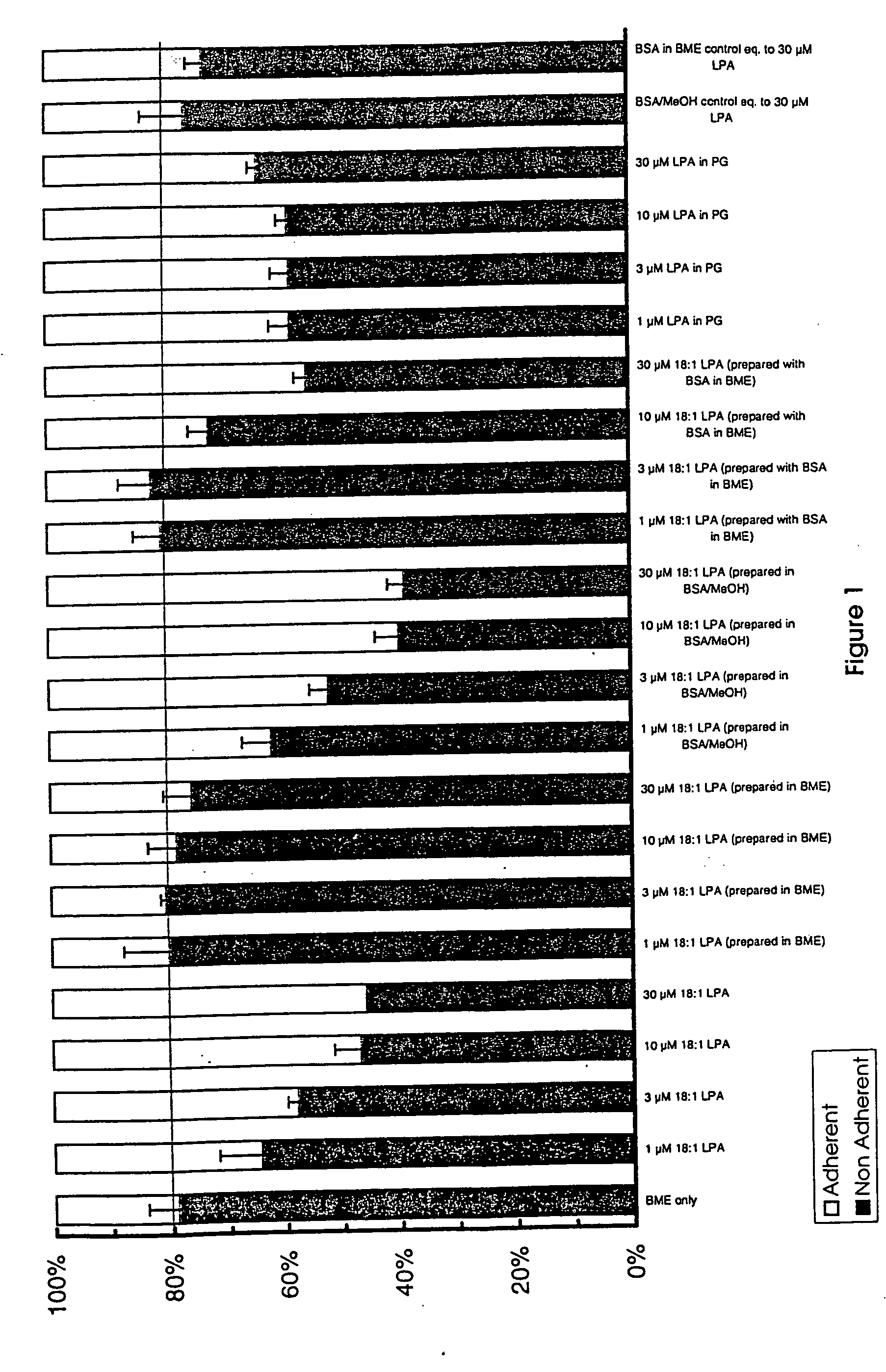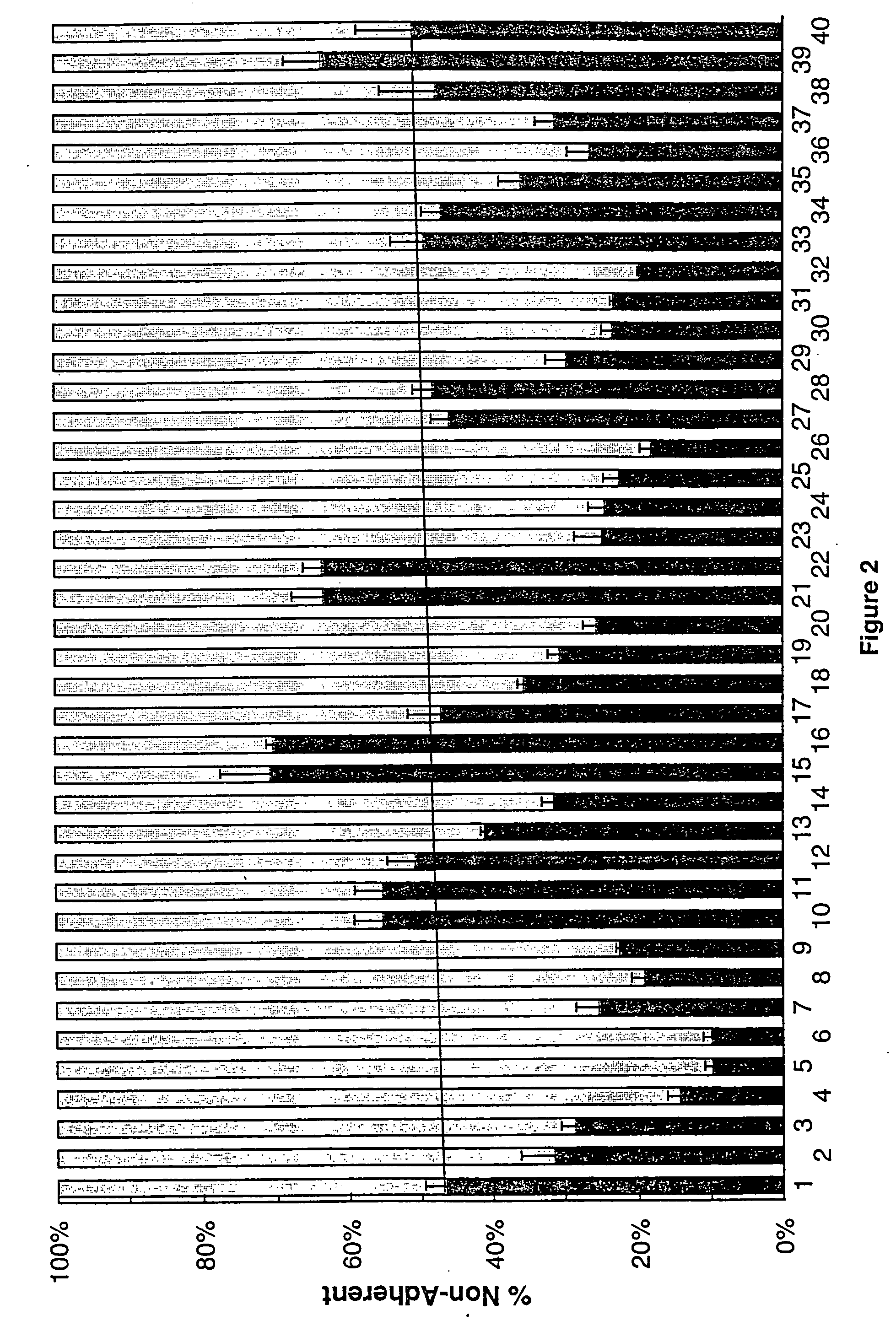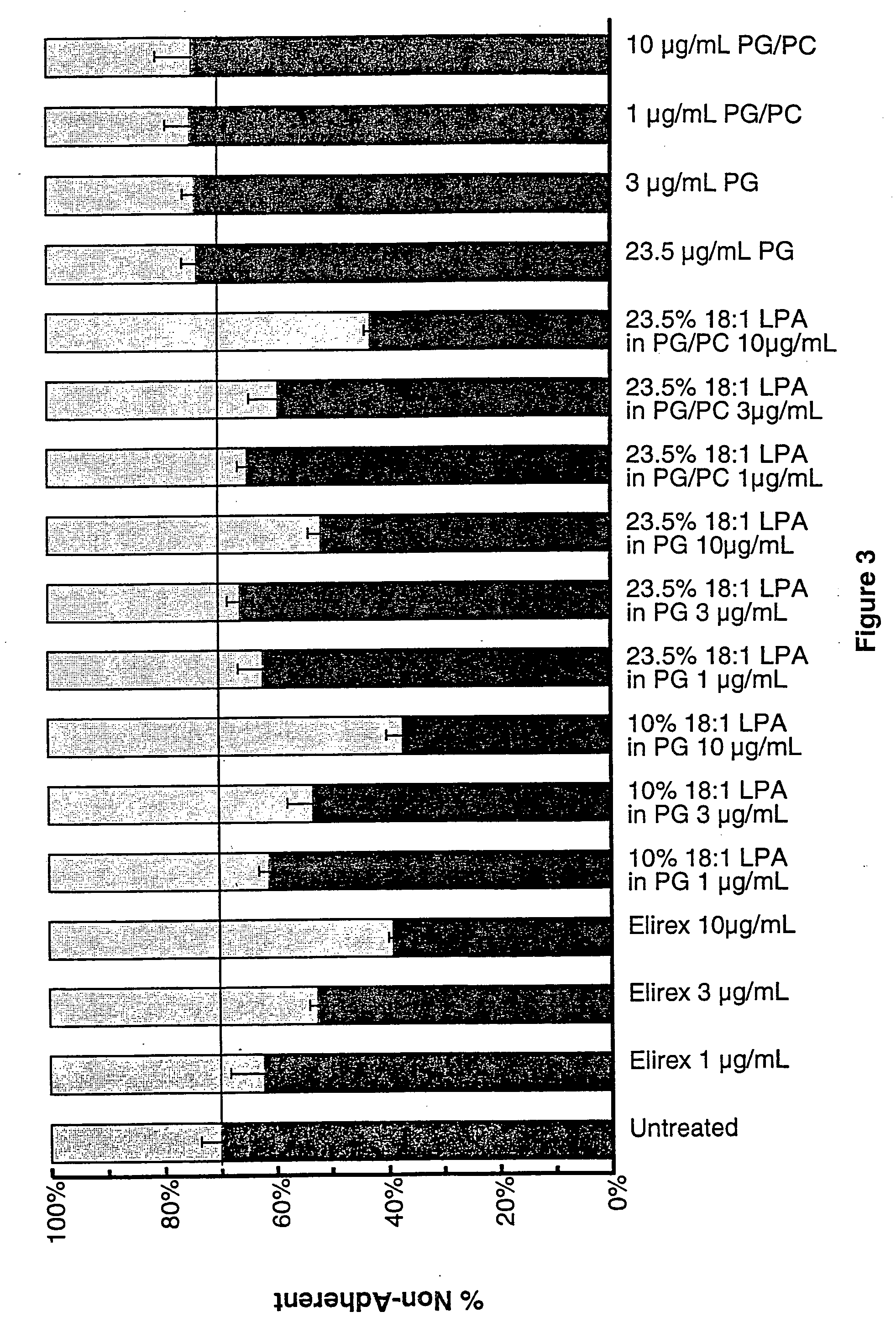Compositions containing lysophosphotidic acids which inhibit apoptosis and uses thereof
a technology of lysophosphotidic acid and lysophosphotidic acid, which is applied in the field of compositions containing lysophosphotidic acid which inhibit apoptosis, can solve the problems of massive cell death by apoptosis, necrotic death of myocardial cells, and decrease in the rate of perfusion heart damage, so as to reduce the problem of apoptosis-related problems
- Summary
- Abstract
- Description
- Claims
- Application Information
AI Technical Summary
Benefits of technology
Problems solved by technology
Method used
Image
Examples
example 1
Structure and Synthesis of Various Analogs of Lysophosphatidic Acid
[0316] The following example sets forth the synthetic methodology and analytical data used in the construction and characterization of several lysophosphatidic acid analogs and derivatives. In addition experimental procedures and analytical data has been provided for intermediates used in the construction of these LPAs.
[0317] Contained at the end of the experimental procedures and analytical data are reaction schemes which show the synthetic routes used in compound construction. The following nomenclature and abbreviations are used in the naming of the compounds: [0318] Bn benzyl [0319] BSA bis(trimethylsilyl)acetamide [0320] t-BuOOH tert.-butylhydroperoxide [0321] CNE cyanoethyl [0322] DMAP N,N-dimethylaminopyridine [0323] DMF N,N-dimethylformamide [0324] Ile L-isoleucine [0325] Me methyl [0326] MeI methyl iodide [0327] MeOH methanol [0328] sat. saturated [0329] TBAF tetra-butylammonium fluoride [0330] TBS tert.-b...
example 2
Anti-Apoptotic Activity Assay
[0464] In order to determine the apoptotic activity of the claimed invention, the following method of analysis was used. The cell assay is described in detail in U.S. Pat. Nos. 5,637,486, 5,620,888, and 5,681,703, and Tomei et al. (1993) Proc Natl. Acad. Sci. 90:853-857. Briefly, mouse fibroblast C3H / 10T½ cells (clone 8) were obtained from ATCC (Rockville, Md.) and were maintained in exponential growth phase in which the cell cycle is randomly distributed and no cells are arrested in G0, and in quiescence. Exponential growth phase was assured by seeding at 2000 cells per 1 ml (5 ml for a 60 mm culture plate) five days prior to the beginning of the experiment. Assays were performed on cells only up to passage 15. At T=0, cultures were transferred to serum-free medium, as an apoptosis stimulus, and seed extracts were added. Controls included 10-7 and 5×10-8 M 12-O-tetradecanoyl phorbol-13-acetate (TPA) to ensure the responsiveness of the cell culture. The...
example 3
Preparation of Five Phospholipid Mixture
[0468] Commercially available purified soy phospholipids containing lysophosphatidic acid and the following other phospholipids: PA, PI, LPI, LPC (available, for example, from Avanti® Polar Lipids, Inc.) were suspended in 50 mM ammonium bicarbonate pH 8.0 containing 154 mM NaCl or buffered aqueous solutions free of divalent cations having a pH range of 5 to 8. Total concentrations of phospholipids of greater than 10 mg / mL can be used provided that clarity is obtainable upon sonication. Total concentrations of up to about 50 mg / mL have been utilized.
[0469] Typically, the phospholipid mixtures are suspended in a buffer and the mixture is placed in a disposable borosilicate glass, preferably 1-2 mL in a 16×100 mm tube or 0.5-2 mL in a 13×100 mm tube, or up to 1 mL in a 12×75 mm tube. The combination of phospholipids is then sonicated. Preferably, a small bath sonicator is used, such as a that sold by Laboratory Supplies, Hicksville, N.Y. The te...
PUM
| Property | Measurement | Unit |
|---|---|---|
| temperatures | aaaaa | aaaaa |
| particle size | aaaaa | aaaaa |
| pore size | aaaaa | aaaaa |
Abstract
Description
Claims
Application Information
 Login to View More
Login to View More - R&D
- Intellectual Property
- Life Sciences
- Materials
- Tech Scout
- Unparalleled Data Quality
- Higher Quality Content
- 60% Fewer Hallucinations
Browse by: Latest US Patents, China's latest patents, Technical Efficacy Thesaurus, Application Domain, Technology Topic, Popular Technical Reports.
© 2025 PatSnap. All rights reserved.Legal|Privacy policy|Modern Slavery Act Transparency Statement|Sitemap|About US| Contact US: help@patsnap.com



